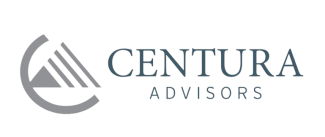Cash flow is not just about how much money you make; it's about how effectively that money moves in and out of your accounts.
It can tell you if you're living within your means, allowing you to save and invest to meet your goals, so let's explore what it is, how to calculate it, and various methods to manage it effectively.
What Is Cash Flow & How Do I Manage It?
Understanding Cash Flow
In its simplest form, cash flow refers to the movement of money into and out of your household.
Positive cash flow occurs when you receive more money than you spend.
Negative cash flow indicates the opposite – spending more than you earn.
Effectively managing cash flow is crucial for maintaining financial stability and achieving long-term goals. It's also a key indicator of financial health!
Calculating Cash Flow
Calculating your cash flow involves examining your income and expenses over a specific period. Here are the basic steps:
1. Identify Income
- List all sources of income. This includes your salary, bonuses, rental income, freelance work, or any other money you regularly receive.
2. List Expenses
- Categorize your expenses into fixed and variable. Fixed expenses are those that stay relatively constant each month (rent/mortgage, debt payments), while variable expenses can fluctuate (groceries, entertainment).
- Don't forget to include insurance premiums, contributions to savings and retirement accounts, and taxes.
3. Calculate Net Cash Flow
- Subtract total expenses from your total income. The result is your net cash flow.
Net Cash Flow = Total Income − Total Expenses
4. Analyze the Results
- If your net cash flow is positive, you have a surplus, meaning you have money left over after covering all expenses. The surplus should be saved or invested.
- If your net cash flow is negative, you have a deficit, indicating that your expenses exceed your income. In this case, you may need to review and cut down on non-essential expenses or explore additional income sources.
Managing Cash Flow Effectively
Create a Detailed Budget
- Establish a comprehensive budget outlining your sources of income and all anticipated expenses (see: How to Create & Maintain a Budget).
- Regularly review and update your budget to reflect any changes in your financial situation.
Forecast Future Cash Flow
- Anticipate potential changes in your cash flow by forecasting future income and expenses.
- This helps you proactively address any upcoming challenges and seize opportunities.
Monitor and Control Expenses
- Regularly analyze your expenses and identify areas where spending can be reduced.
- Review subscriptions to ensure all services are still being used.
Use Auto-Draft
- Setting up auto-draft for savings can ensure you're consistently setting money aside for your goals, and not accidentally spending it.
- Having your bills and credit card payments automatically drafted from your account can prevent late fees.
Build an Emergency Fund
- Having a financial safety net can buffer unexpected expenses, preventing them from disrupting your cash flow
- See: Emergency Funds
Diversify Income Sources
- Explore additional income streams to diversify your sources of cash flow.
- This could include side hustles, investments, or passive income opportunities.
Pay Down High-Interest Debt
- Allocate a portion of your surplus cash flow to pay it off faster
- See: Debt Reduction Strategies
Utilize Resources
- Leverage financial tools and apps to automate budgeting, track expenses, and receive real-time insights into your cash flow.
- Financial planning clients receive free access to eMoney, which includes automated budgeting and cash flow tracking tools.
Need help getting started? Contact us to request a free Financial Planning consultation!
